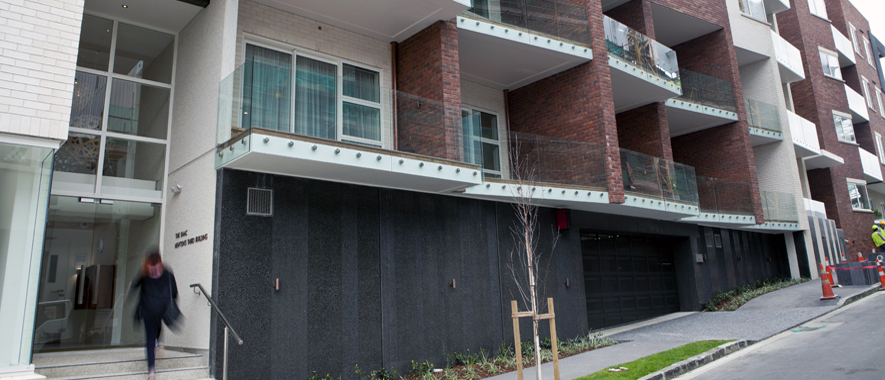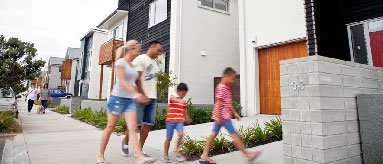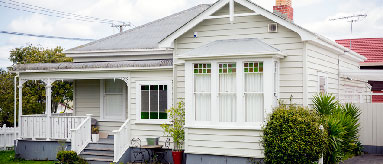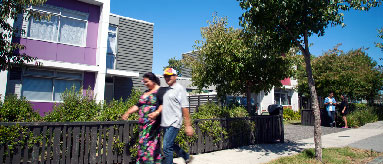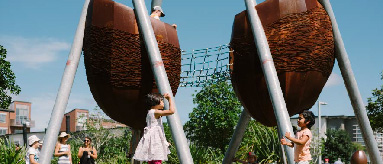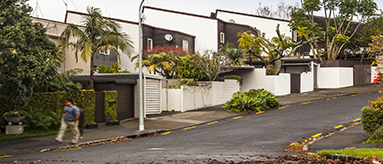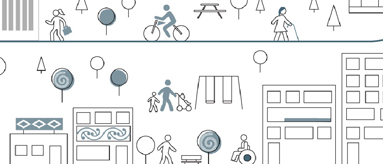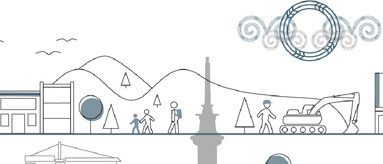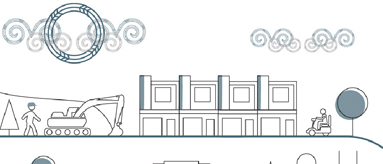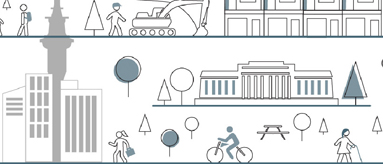Focus area 5
Rohe arotahinga 5: Te waihanga i ētahi wāhi tāone mō anamata Create urban places for the future
Well-designed public places and spaces are an integral part of urban living. They are also important for our rural and island communities whose needs are different.
Our urban public places will play an increasingly vital role in the future as Auckland grows and intensifies.
Public places and spaces include a wide range of land that is publicly owned, and potentially available for use by everyone, such as:
- open space, sports fields and parks, ranging from small local parks to large regional parks
- walkways, greenways Connected pathways separated from roads that provide for safe walking, cycling and recreation. They provide access to places such as schools, libraries, shopping, and public transport nodes, and have environmental benefits. and cycleways
- roads and footpaths
- squares, plazas and some land between buildings.
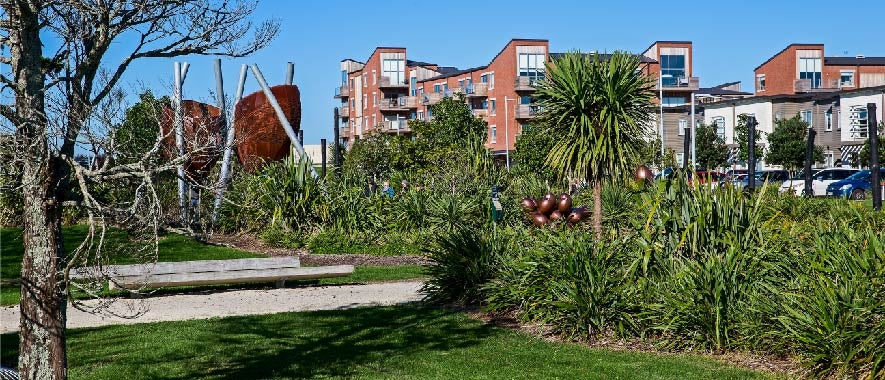
Public parks are often placed near urban living, such as apartment buildings.
Given the cost of land, we will not be able to rely exclusively on acquiring new public places to meet the needs of a growing, and increasingly urbanised population.
It is therefore crucial that we:
- consider all publicly owned land as potential public space that is able to contribute to greening the city and play an important role in climate change mitigation and adaptation
- use existing public places and spaces as effectively and efficiently as possible, including green spaces for sport and recreation
- design our public places to be multi-functional in use, and adaptable in the future
- focus investment in areas of greatest need, such as areas of particularly high population density, or areas characterised by underinvestment
- create public places that are welcoming to all, with inclusive design and architecture
- ensure our public places and spaces are accessible for all people, applying universal design principles.
Placemaking The collaborative and integrated process of planning, designing and building places, so that they are successful, enduring and attractive for people. plays an important role in creating high quality urban environments. It also supports our culture and identity, such as Auckland's unique Māori cultural identity, in our public places. We can also reflect and embed our unique local character in the built environment by, for example, incorporating and integrating built heritage and public art into existing and new spaces.
How this can be done
First, we need to shift our perception of what a public place or space ought to be.
Second, we need to adopt different approaches to the design of public places so they:
- can perform many functions at the same time, giving people flexibility in how they use them, and finding the right balance between the various functions of a space
- connect areas and residents to each other and to the public amenities Desirable or useful features or facilities of a building or place, usually established for the convenience of users, e.g. landscaping, public toilets, rubbish bins, lighting, direction signs, fountains. they value.
Auckland is already starting to recognise the value of turning its public places to new and multiple uses. This needs to be accelerated.
While some parts of Auckland are well served with quality public places and spaces, others are not.
Investment must therefore be specifically targeted at:
- those areas that undergo significant growth and where population densities are increasing
- those parts of Auckland that are currently under-served and where it will make the most difference to quality of life.
Our efforts could focus on:
- restructuring streets and other public land into new public places and spaces that support housing intensification and centre development, and provide safe environments for the people who use them
- communities where real improvements in quality of life can be achieved, using place-based initiatives An approach that targets an entire community and aims to address issues that exist at the neighbourhood level.. These combine investment in public spaces, libraries with council services and community facilities to achieve broader social, cultural, environmental and economic outcomes.
- greening the city for enhanced liveability and to maximise the role that green spaces play in climate change mitigation and adaptation. This means greater use of nature-based solutions such as green roofs and city parks to limit heat stress ( urban heat island effect When a city experiences much warmer temperatures than nearby rural areas, due to the ability for surfaces in each environment to absorb and hold heat.), urban forests with trees for shade, water retention and bird life, and permeable surfaces and rain gardens to intercept stormwater.

